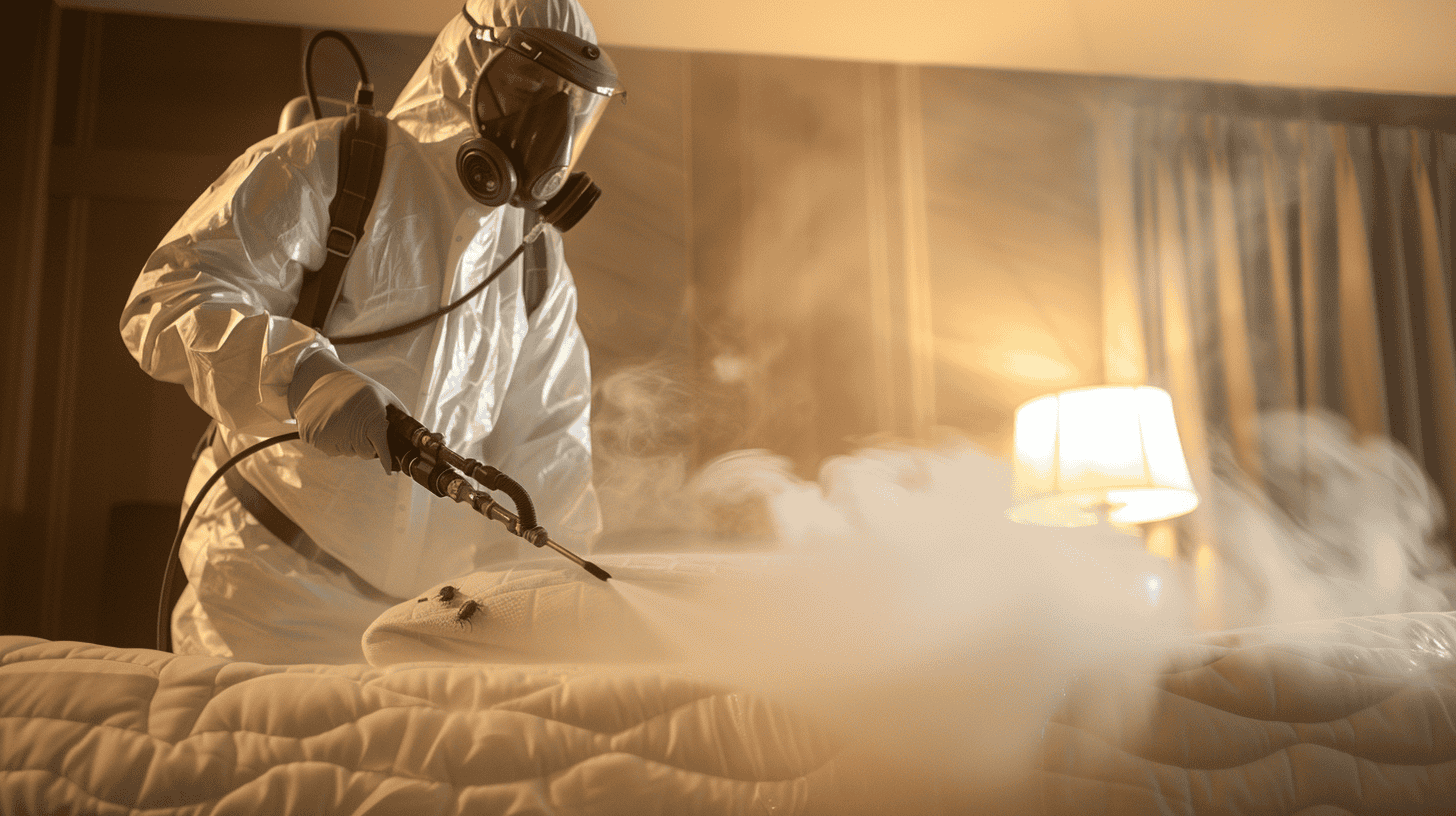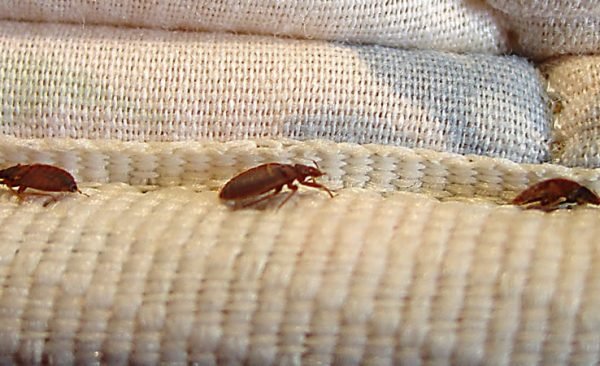Effective Bed Bug Heat Treatment for Homes and Businesses in Arlington
Effective Bed Bug Heat Treatment for Homes and Businesses in Arlington
Blog Article
Obtain Informed About the Kinds Of Pest Control Approaches and Their Advantages for Home Owners
Comprehending the various bug control methods readily available to property owners is crucial for efficient pest monitoring. Property owners that are well-informed can make critical choices that not only address bug issues however additionally enhance the general top quality of their living environment.
Chemical Bug Control Methods
Chemical insect control approaches are a vital part of integrated bug monitoring techniques for home owners seeking effective options to pest problems. These methods include the application of chemical substances designed to eliminate or prevent insects that endanger personal property, health, and convenience. Typical chemicals used include pesticides, fungicides, herbicides, and rodenticides, each customized to target certain parasites.
The primary advantage of chemical parasite control is its fast performance; several solutions provide immediate outcomes, reducing pest populations dramatically quickly. In addition, advances in chemical formulations have led to items that are extra eco-friendly and have reduced poisoning levels for non-target organisms when applied appropriately.

Biological Parasite Control Techniques
Natural parasite control methods have gotten prestige as property owners seek much safer and extra sustainable options to standard chemical approaches. Biological insect control methods make use of natural predators, bloodsuckers, or pathogens to take care of bug populaces effectively. This approach is not only eco-friendly however likewise decreases the risk of harm to non-target varieties, consisting of beneficial insects and wildlife.
One of the most common biological control techniques includes introducing natural predators into the environment. For instance, ladybugs can be used to control aphid populations, while nematodes target soil-dwelling pests like grubs. Additionally, parasitoids-- microorganisms that survive or within a host-- can be used to manage particular bug species by laying eggs inside them, inevitably causing their death.
One more method is the use of biopesticides, which are originated from natural materials such as minerals, plants, or microorganisms (bed bug exterminator). These products can efficiently target pests while presenting minimal risk to human beings and family pets. On the whole, organic insect control techniques provide house owners with a reliable ways of insect management that straightens with environmental concepts, advertising a healthier living setting while minimizing dependence on artificial chemicals
Mechanical Insect Control Strategies
Mechanical bug control techniques incorporate a range of approaches that physically prevent or get rid of parasites without making use of chemicals. These strategies are especially advantageous for home owners seeking eco friendly alternatives while guaranteeing the safety and security of their home.
One typical method is making use of obstacles, such as internet, displays, and traps, which stop pests from entering homes or certain areas. Mounting window displays can successfully keep pests out, while making use of physical barriers around gardens can prevent bigger parasites like rabbits or deer. Furthermore, mechanical catches made for rats can record and remove these pests without the requirement for hazardous materials.
An additional reliable strategy involves using brooms and vacuums to remove insects directly from surfaces. Regular cleaning and maintenance can substantially decrease pest populations by getting rid of food sources and concealing places. Employing devices like ultrasonic pest repellents can deter numerous insects via audio waves that are undesirable to them but inaudible to people.
Social Parasite Control Practices
Social bug control methods concentrate on customizing the environment and management strategies to produce conditions that are less for pest problems. These techniques are essential in maintaining a well balanced ecosystem and lowering the dependence on chemical interventions. By altering farming practices, homeowners can effectively hinder bugs while promoting plant wellness.
One typical approach consists of crop turning, which interrupts the life cycles of pests by changing the sorts of plants grown in a details area (bed bug exterminator). This not just lessens pest populations however also boosts dirt health. In addition, intercropping-- planting varied plants in distance-- can perplex insects and lower their capability to situate their recommended host plants
Water management is one more vital aspect of cultural techniques. Appropriate watering techniques can protect over here against standing water, which serves as a breeding ground for insects and other pests. Keeping cleanliness in and around the home, such as frequently getting rid of particles and food waste, can considerably minimize parasite attraction.
Including these social techniques into a thorough insect administration method allows house owners to produce an atmosphere that naturally hinders pests, thus improving the efficiency of various other control techniques while advertising lasting horticulture and landscape design.

Integrated Pest Monitoring Approaches
Integrated Parasite Administration (IPM) represents an alternative approach that incorporates numerous techniques to efficiently take care of bug populations while minimizing ecological effect. This methodology incorporates biological, cultural, physical, and chemical methods to accomplish lasting bug control. By evaluating pest populaces and their natural enemies, IPM highlights tracking and recognizing insects before applying control procedures.
One of the core concepts of IPM is the use of limits, which establish the degree of insect task that calls for intervention. This makes sure that treatments are applied just when required, reducing the reliance on chemical pesticides. Organic control methods, such as presenting all-natural predators or bloodsuckers, work in conjunction with social practices like plant turning and habitat control to disrupt pest life cycles.
Moreover, IPM encourages the usage of least-toxic chemical choices when treatment is necessary, prioritizing items that pose very little threat to non-target organisms and the atmosphere. For home owners, adopting IPM approaches not only enhances the efficiency of pest management however additionally advertises a healthier living atmosphere, promoting biodiversity and lowering chemical exposure. Eventually, IPM equips home owners to make informed decisions that balance bug control with eco-friendly duty.
Final Thought
In final thought, comprehending the different insect control techniques equips property owners to make informed decisions regarding pest management. Each approach-- chemical, organic, mechanical, social, and integrated insect management-- offers distinctive benefits that accommodate various demands and preferences. By selecting ideal approaches, house owners can successfully handle pest populaces while lessening health and wellness risks and environmental influences. This informed strategy adds to a much healthier living atmosphere, advertising general well-being for families and pet dogs alike. see page
Recognizing the various bug control methods offered to homeowners is important for effective insect administration.Chemical insect control techniques are a critical component of integrated insect administration approaches for house owners looking for effective services to pest problems. Overall, biological bug control strategies offer house owners with a reliable methods of insect administration that straightens with ecological principles, promoting a healthier living setting while lowering reliance on synthetic chemicals.
Cultural insect control methods concentrate on changing the setting and management techniques to produce problems that are less conducive to pest invasions.In conclusion, understanding the different bug control methods equips house owners redirected here to make educated decisions pertaining to pest monitoring.
Report this page